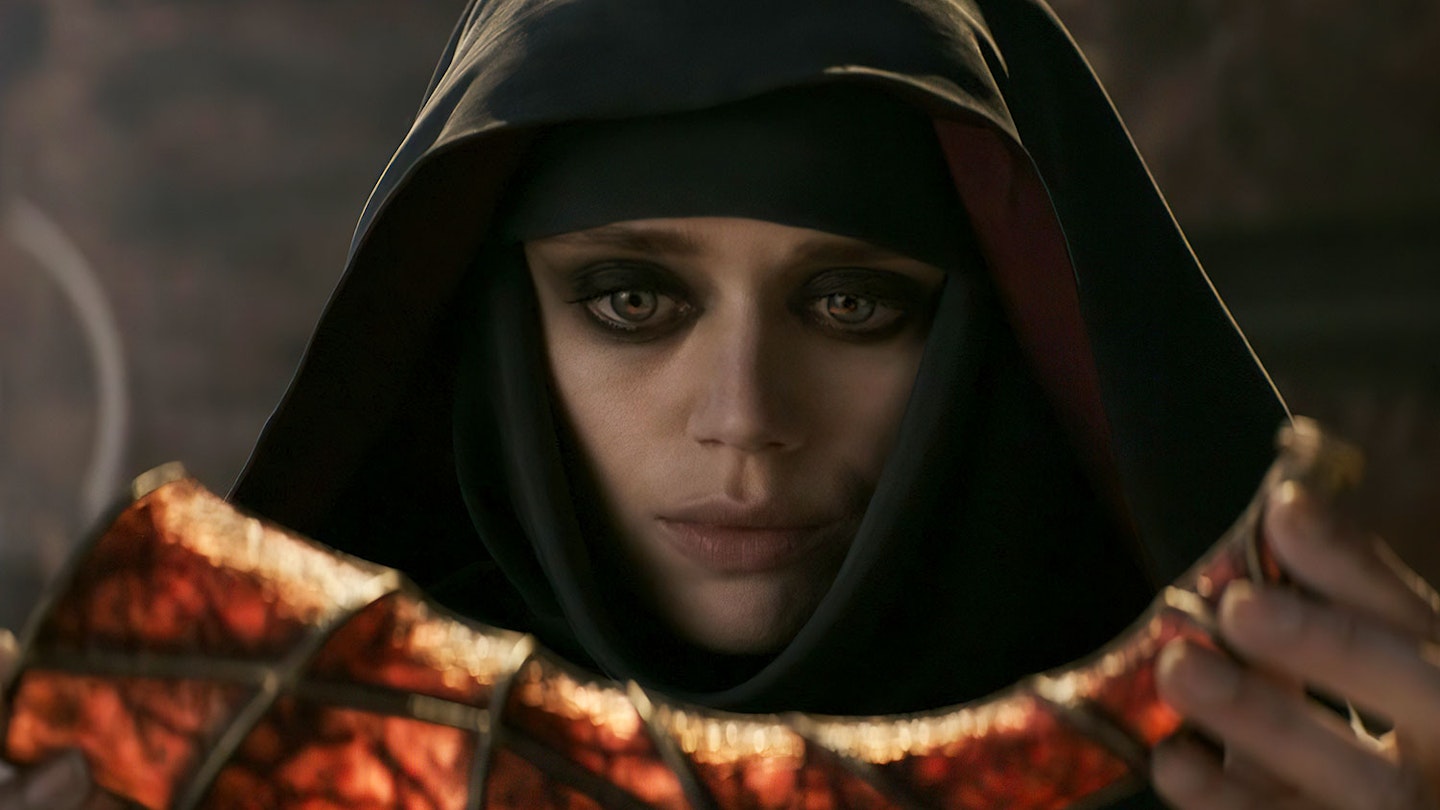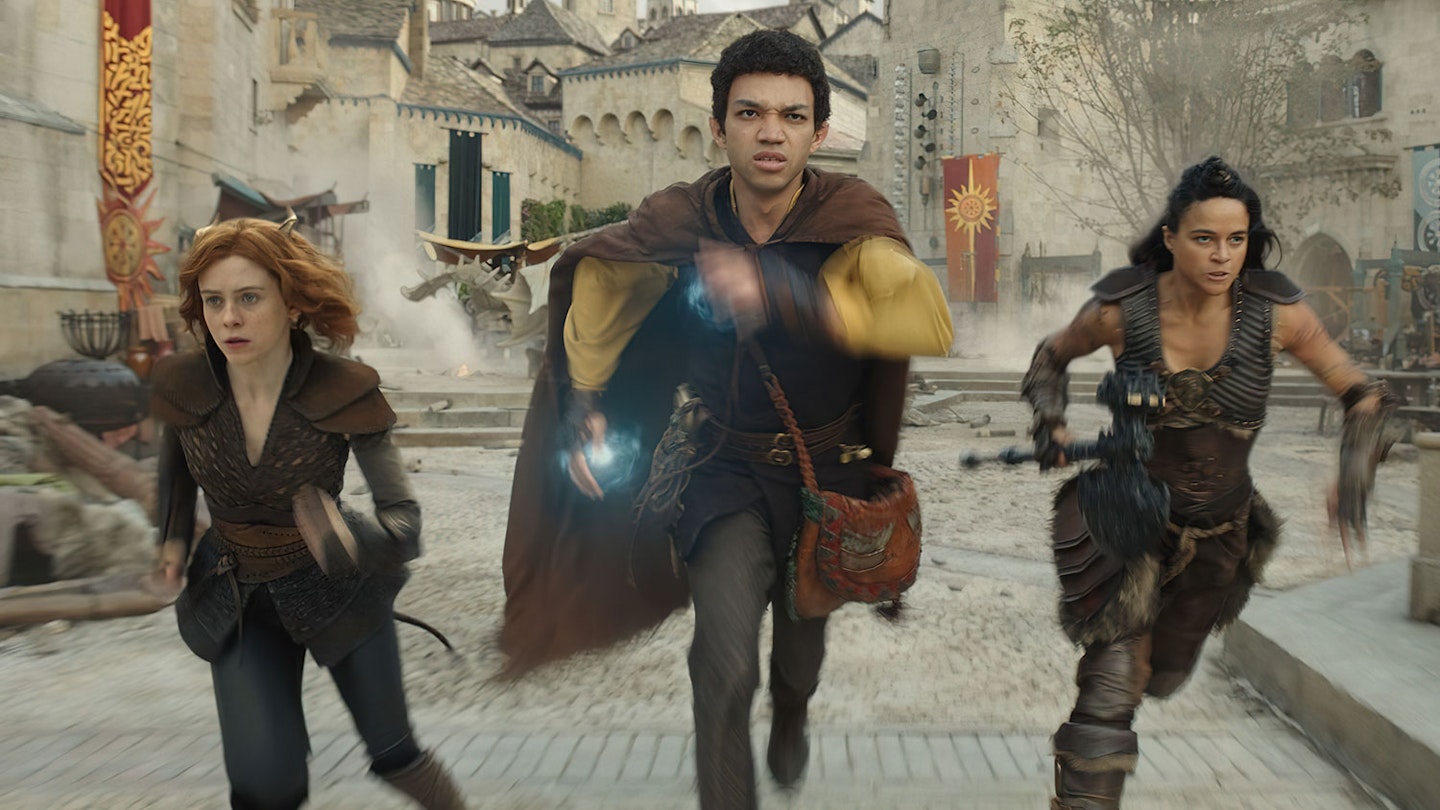In the final episode of the seminal high school TV comedy-drama Freaks And Geeks, titled ‘Discos and Dragons’, teenage nerd Sam Weir (played by John Francis Daley) is fed up. “I'm sick of being called a geek,” he complains to his friends. “I mean, what's so geeky about us, anyways? We're just guys.” Then, with perfect comic timing, his equally nerdy friend Harris (Stephen Lea Sheppard) approaches him in the school corridor and announces: “Gentlemen. Good news! New Dungeons & Dragons handbook. ‘Deities And Demigods’. We’re gonna have a fun Friday night!”
Criminally cancelled in 2000 after just one season, Freaks And Geeks was at the time perhaps the most accurate on-screen depiction of the fantasy tabletop role-playing game Dungeons & Dragons. For a long time, D&D — with its high fantasy tropes, its fair maidens, its complex magic, its many-sided dice and its opaque, labyrinthine rules — seemed solely the domain of geeks. The culture was strictly delineated. Pick a lane, and stick in it: are you a jock, or a nerd? Freaks & Greeks artfully demonstrated a truism that had been true for some time, that Dungeons & Dragons was not for cool people. Harris’s D&D handbook might as well have carried a warning: abandon street cred, all ye who enter.
Yet here we are now in 2023, with a $150 million blockbuster adaptation, Dungeons & Dragons: Honour Among Thieves, confidently bursting into multiplexes, starring one of Hollywood’s Four Chrises (Pine, to be clear), self-assuredly competing with the biggest blockbusters — and in a beautiful piece of karmic symmetry, co-directed by John Francis Daley, closing a circle he opened two decades earlier in Freaks And Geeks. (Daley even reunited with his fellow Geeks, actors Martin Starr and Samm Levine, for an Honour Among Thieves promo. How did it come to this? How did a fringe hobby for the socially inept, and a long-time cheap and easy punchline for the unkind, become a lightning-hot slice of the zeitgeist? How did the geeks — as The Simpsons character McBain once put it, in his movie ‘Undercover Nerd’ — inherit the earth?
--
I started my first Dungeons & Dragons campaign in 2017. I wasn’t alone. That year saw the most number of players in the game’s history — somewhere between 12 to 15 million in North America alone, according to the game’s publishers, Wizards Of The Coast. It was a long and arduous quest, however, to reach this high-water mark. Created by Gary Gygax and Dave Arneson in 1974, as a fantasy alternative to their Napoleonic wargaming hobby, Dungeons & Dragons enjoyed an early initial success, with over three million players reported by 1981. It became immortalised in mainstream pop culture with an appearance in Steven Spielberg’s 1982 masterpiece E.T. The Extra Terrestrial, in a scene which sees Elliott desperately trying to join his older brother’s campaign. (“There’s no winning,” one character sagely notes in the film. “It’s like life. You don’t win at life”.
D&D soon became beloved and formative among teenagers and young people of a certain nerdy disposition. But the ‘Satanic Panic’ of the 1980s spooked many nervous parents, and a slow decline of the game followed, with its then-publisher, TSR, nearing bankruptcy in the mid-’90s. In 1997, Wizards Of The Coast acquired the game, and in the mid-2000s updated their arcane rules to introduce the game’s hugely popular fifth edition, known among players as ‘5e’, which simplified much of the gameplay’s more complicated infrastructure. The game was also made more accessible through an Open Gaming License, which allowed players to craft new tabletop experiences using D&D mechanics, opening the floodgates for ‘homebrew’ campaigns.

The advent of streaming sites like Twitch, meanwhile, soon found vast audiences for countless campaigns, and allowed for series like Critical Role and Oxventure to win millions of fans. Community and Rick & Morty creator Dan Harmon began playing D&D at his live Harmontown shows, later adapting these games into three seasons of the semi-animated HarmonQuest series. Hunky heartthrobs like Joe Manganiello and Vin Diesel soon became highly visible advocates of the game, providing a counterweight to the common stereotype that D&D was purely the preserve of weedy, friendless little boys. (It’s important to note, too, that women make up 40% of D&D players, according to a recent survey.) And then in 2016, the year before D&D’s record-breaking moment, Stranger Things was launched.
The impact of Stranger Things can’t be ignored. The biggest hit on Netflix at the time, and still its second biggest original show ever, it was a bona fide cultural phenomenon, especially among its target audience. Having the young heroes not only play the tabletop game in the show, but also borrow key D&D terminology for their own supernatural foes (the Demogorgon, Shadow Monster, Mind Flayer and Vecna are all borrowed from the game) was huge. The show even addressed the Satanic Panic in the fourth season, with Eddie Munson (Joseph Quinn) railing against the demonisation of the game (“It's forced conforming!” he says, in the episode ‘The Hellfire Club’. “That's what's killing the kids...that's the real monster.”) Stranger Things’ whole-hearted embrace of that culture, and its sense of inclusivity, cemented the idea in the minds of influential Gen-Z-ers that D&D was, in fact, for everyone.
It’s the collective experience that ultimately makes D&D so cool, why millions of people are finally waking up to its unusual charms, why even one of Hollywood’s Four Chrises is getting in on the action.
Meanwhile, a wider trend in popular culture was happening in parallel. That strict jock-v-nerds dividing line became blurrier than ever. Just look around: comic books are now strictly mainstream; a superhero movie (Avengers: Endgame) became the second highest-grossing film ever; a high fantasy drama (Game Of Thrones) became one of the biggest TV shows of all time. The result of all this — of geek culture permeating into normie culture — meant the perception of fantasy was forever changed. Perhaps the biggest barriers for mass acceptance of D&D was schoolyard-esque shame and embarrassment, and fear of the judgement of others. What happens when that barrier starts to evaporate?
--
When I first started playing D&D in 2017, I found a kind of strange unspoken omerta between new players and outsiders. Within our game, there was a safe space; outside of it, the road was not always friendly. Unsure of how people might react to being told I was spending my weekend traversing the mysterious lands of the Forgotten Realms, I would often just make up a story, carefully withholding information until I could be sure I wouldn’t be ridiculed. After a while, this started to feel quite futile. There is, in fact, nothing to be ashamed of here. It is a harmless, wholesome pastime, like cinemagoing, or swimming, or (bit more niche, granted) wax sealing. Sure, the fantasy milieu can be quite silly, the endless stats quite mind-boggling. But that all melts away when you start playing.

To be clear: I completely love Dungeons & Dragons, earnestly, and without caveats. It is hard to overstate, at its best, how much fun an hours-long session can be; a heady mix of shared storytelling, improvisation, cunning, wit, imagination and pure goddamned luck. (There are few greater feelings than rolling a natural 20 in a high-stakes moment.) It is not an exaggeration to say that some of my most memorable social experiences of the last few years have been spent squeezed around a dining room table with a notebook and a character sheet in my lap, dice in one hand, beer in the other. My character, the level 9 half-elf druid known as Thranduil Humblethorne, has magically wild-shaped into both a giant eagle and a frog, summoned ice storms from the skies, adopted a black bear companion, made an uneasy alliance with an undead lich, created a water elemental that accidentally went on a deadly rampage, and proposed marriage — unsuccessfully — to a fair maiden. (Only in D&D can you imperiously summon lightning and conjure swarms of locusts while pausing to answer the doorbell to a pizza delivery driver.)
My band of companions, the DMG (the initials have variously stood for Daring Mortal Guard and Damage Management Control), have collectively been through the wringer, too: we’ve battled minotaurs, hill giants, zombies, werewolves, chimaeras, ropers, mimics, trolls, gricks, gargoyles, goblins, and — of course! — gelatinous cubes. We have cast the ‘Charm Person’ spell on an orc named Bog in order to help our quest, and watched with horror as the spell wore off, the look of betrayal and hurt on Bog’s face (in reality, of course, on the face on my Dungeon Master), a look that continues to haunt me to this day. I have watched my pansexual elf ranger companion, Elrand di Vioh Lencè, flirt with practically every creature he encounters. I’ve even watched another companion, Lothar Springheel — a lute-playing halfling bard — die at the hands of a fire elemental, in a session that proved oddly emotional. This was a character we had, by this point, shared hours of gameplay with, fought side by side, shared the highs and lows of an epic adventure. We mourned him. We even role-played a funeral for him. I wish I could say I was joking.
Above all, Dungeons & Dragons is at its best when you get to simply spend time with your pals. This is, at its heart, a game that provides hours of opportunities for friends to get together on a regular basis and basically just hang. I have rarely known laughter or adrenaline quite like it. We sometimes wonder, collectively, if we’ll be like the campaigns you sometimes hear about. The ones which run for years or even decades, the campaign acting as a handy function to simply to stay in touch, even as the inevitabilities of adult life gets in the way.
It’s the collective experience that ultimately makes D&D so cool, why millions of people are finally waking up to its unusual charms, why even one of Hollywood’s Four Chrises is getting in on the action. While tech billionaires like Mark Zuckerberg strive for ever more immersive gameplay in VR and the metaverse, the most immersive form of gaming exists already, and has done so since 1974. “We just sit around and crack jokes and eat junk food all night while we're fighting dragons and saving princesses and stuff,” as John Francis Daley’s Sam explains in the final episode of Freaks And Geeks. “It's pretty fun.”
